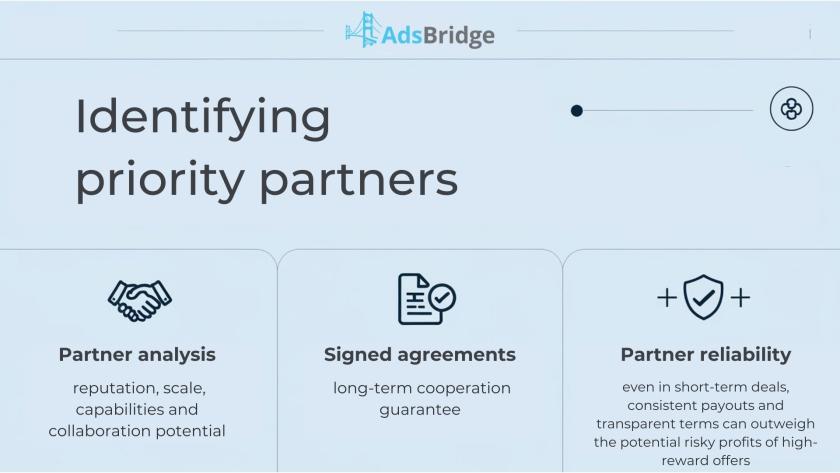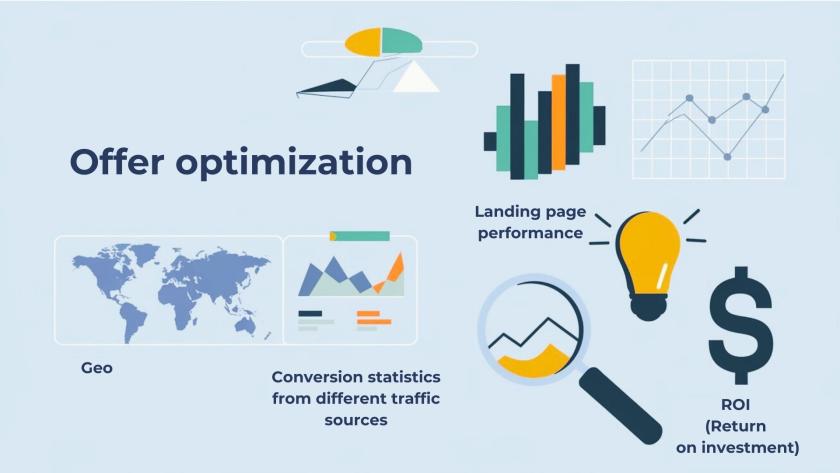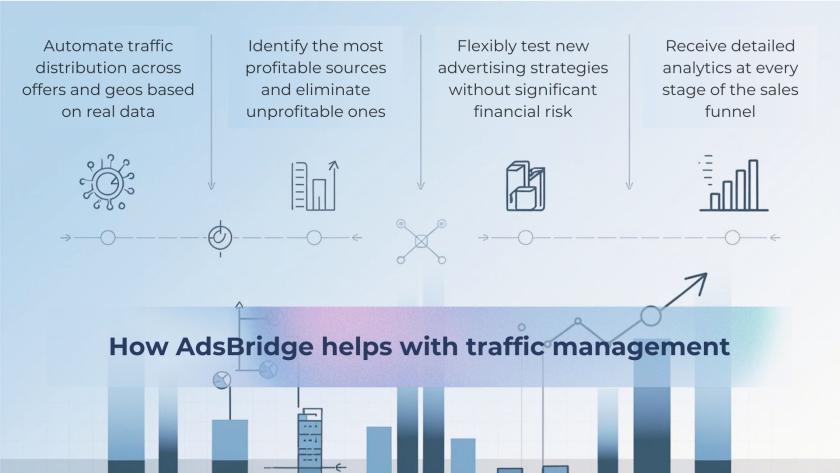Affiliate marketing is a space where design often changes, but the core principles remain the same. Most profitable strategies have been known for a long time, but true professionals are always striving to discover new approaches for quality scaling.
Today, we’ll share the key stages of traffic management that will help you effectively optimize your advertising campaigns.
Stage 1: Identifying priority partners
To manage traffic effectively, it’s crucial to understand exactly where to direct it. Choosing the right partners should be based on several key factors:
- Partner analysis: reputation, scale, capabilities and collaboration potential.
- Signed agreements that ensure long-term cooperation.
- Partner reliability: even in short-term deals, consistent payouts and transparent terms can outweigh the potential risky profits of high-reward offers.
Once priority partners are identified, you can move on to the next stage.

Stage 2: Offer optimization
Here, we focus on several key performance indicators:
- Geo
- Conversion statistics from different traffic sources
- Landing page performance
- ROI (Return on Investment)
By analyzing these metrics in real time, you can make timely adjustments not only to creatives and traffic sources but also to the product. Flexibility and a willingness to test different approaches help find the optimal combination of offer, geo, and landing page.
It’s important to understand that an offer is not a fixed constant — it’s a variable that can and should be adapted based on market dynamics and collected data.

Stage 3: Traffic distribution
When certain offers start generating stable revenue and fast payback, part of your resources can be redirected to testing new ones. This approach allows you to:
- Strengthen relationships with advertisers
- Build trust as a reliable partner
- Speed up the scaling process
Mastering multiple key offers from a single advertiser not only stabilizes your contract but also creates predictable income — opening the door for aggressive growth.
Stage 4: Analytics and continuous optimization
Throughout the entire traffic management process, analytics plays a crucial role. Constant monitoring of traffic quality and changes in buying algorithms enables you to quickly respond to fluctuations.
Optimization includes:
- Tracking performance at every 10% increment of total traffic volume
- Using internal tools and analytics dashboards
- Configuring tracking systems to improve traffic quality
- Adapting third-party solutions to meet specific goals
How AdsBridge helps with traffic management
AdsBridge is a powerful tool for tracking, analyzing, and optimizing traffic. Its features enable users to:
- Automate traffic distribution across offers and geos based on real data
- Identify the most profitable sources and eliminate unprofitable ones
- Flexibly test new advertising strategies without significant financial risk
- Receive detailed analytics at every stage of the sales funnel
With AdsBridge, affiliates can significantly speed up the scaling process and boost the effectiveness of their ad campaigns.

Conclusion
Effective traffic management isn’t about luck — it’s about structured work, continuous testing, analysis, and strategy adjustment. With a systematic approach, you can achieve steady growth and successfully scale your advertising efforts.
